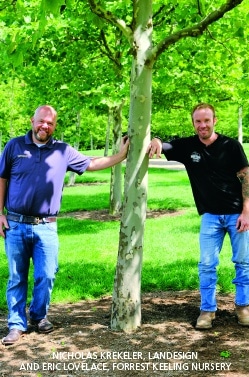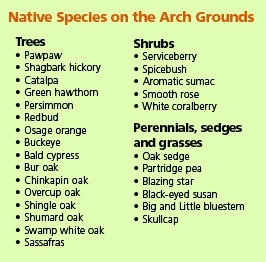The Gateway Arch is an iconic landmark. It is as monumental as the history and people that it honors. Names like Thomas Jefferson, Lewis and Clark, Dred Scott and countless pioneers are linked to the Gateway City and the River Landing. In fact, most of our country’s history connects in some way to the site.
Over fifty years after its completion, the Arch continues to be a top tourist destination.
The brilliance of Eero Saarinen’s simple, modernist design and engineering continues to astonish. The original landscape design by Dan Kiley is also considered a modern masterpiece.
So, when it was time to update and refurbish the grounds, those involved saw it as a sacred duty. “The vision was to connect St. Louis with the Arch grounds and Riverfront with a design to accommodate all,” shared Nicholas Krekeler, Landesign project manager and restoration ecologist. Krekeler managed the project for Landesign’s St. Louis landscape team.

Kiley’s curvilinear design is a nod to both the Arch and the Mississippi that reflects it. The CityArchRiver project respected Kiley’s mid-century modern landscape design. But, it also incorporated new, important design features. The circulation loop offers pedestrian and bike paths around the park. The North Gateway’s natural amphitheater and Explorers’ Garden features native plantings. Sweeping views are available from paths and the Grand Staircase.

The landscape project wasn’t only about replacing a few trees. “We removed the old site soils and brought in engineered soils. Those soils do two things. Allow plants to flourish and withstand the impact of the tourists and festivals. During that time, we removed and replaced well over 50,000 cubic yards of soil from the site,” reflected Krekeler. “We planted over 5000 new trees. Plus, there were hundreds of thousands of shrubs and perennials and over 25 acres of new sod. Most of the plant material was native, as Kiley’s original plan specified.”
It was fitting that a good deal of that native stock came from Forrest Keeling Nursery. “We supplied a lot of the plant material for the original planting in the late ’60s,” said Eric Lovelace, vice-president, sales. “Our Nursery was proud to be one of the suppliers again. We grew much of the three and five gallon material. Larger oaks and hickories started as our liners. Other growers finished them to caliper size.”
